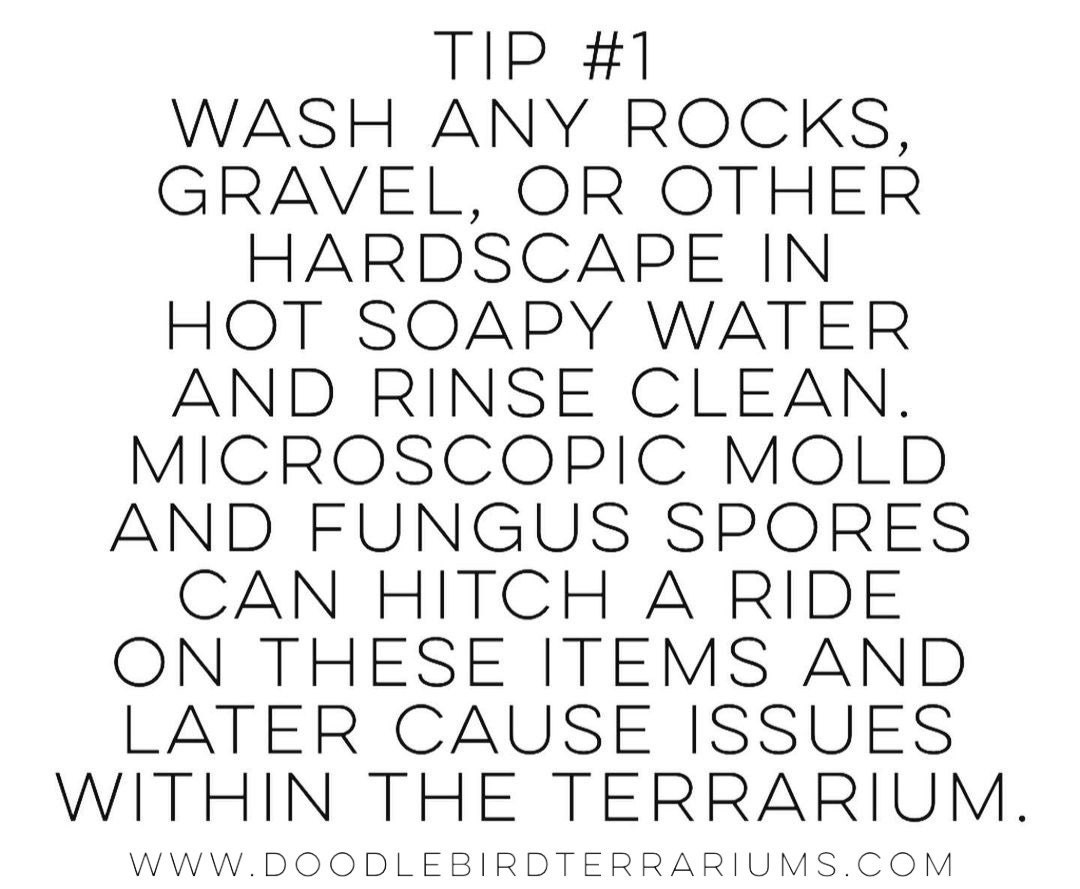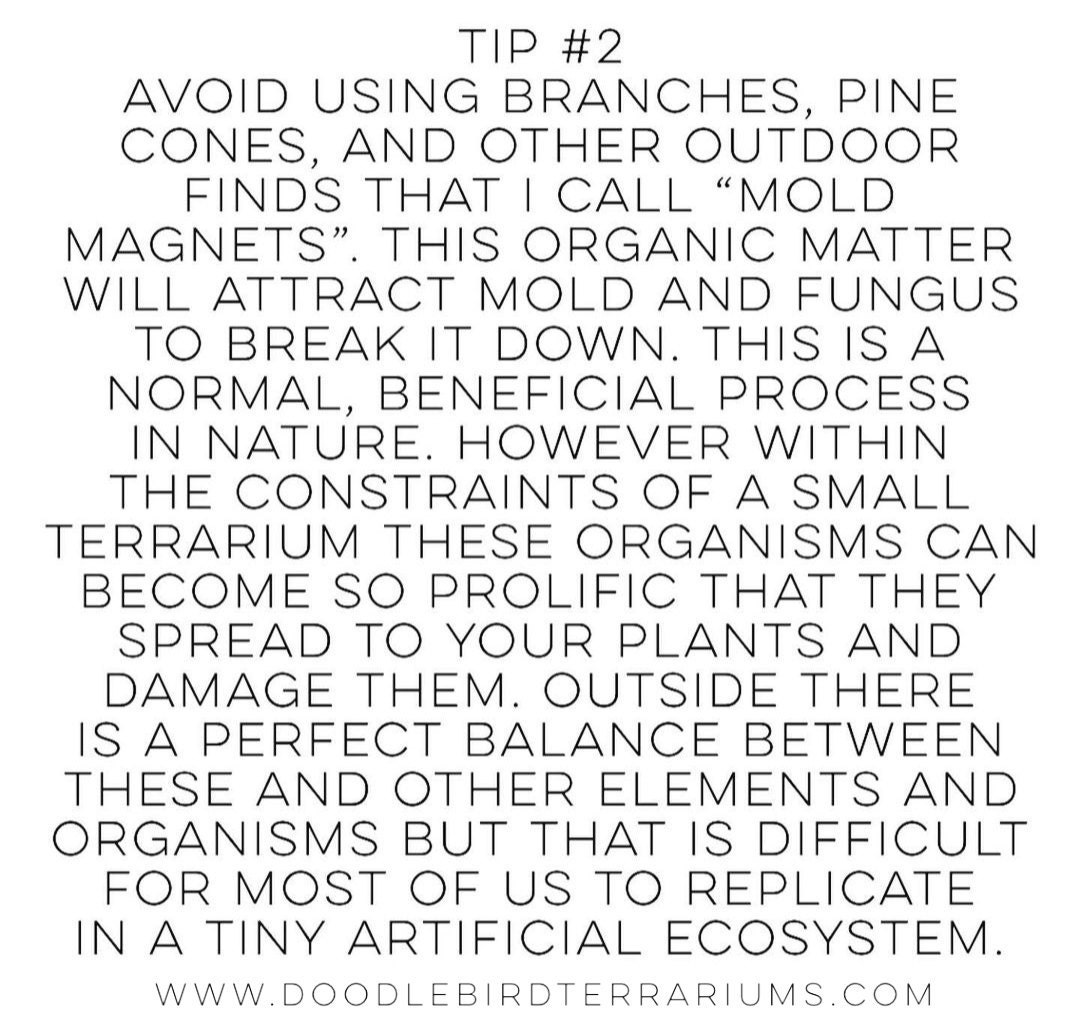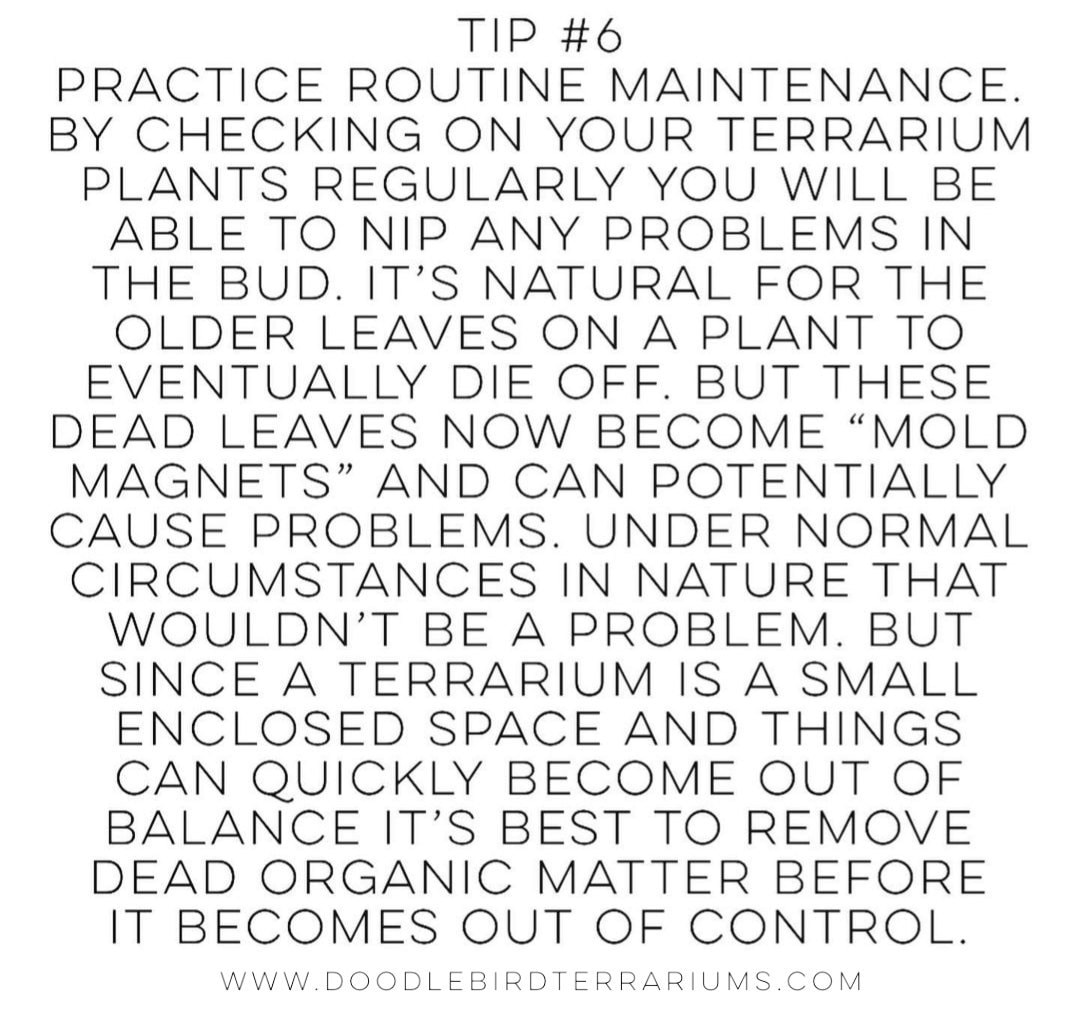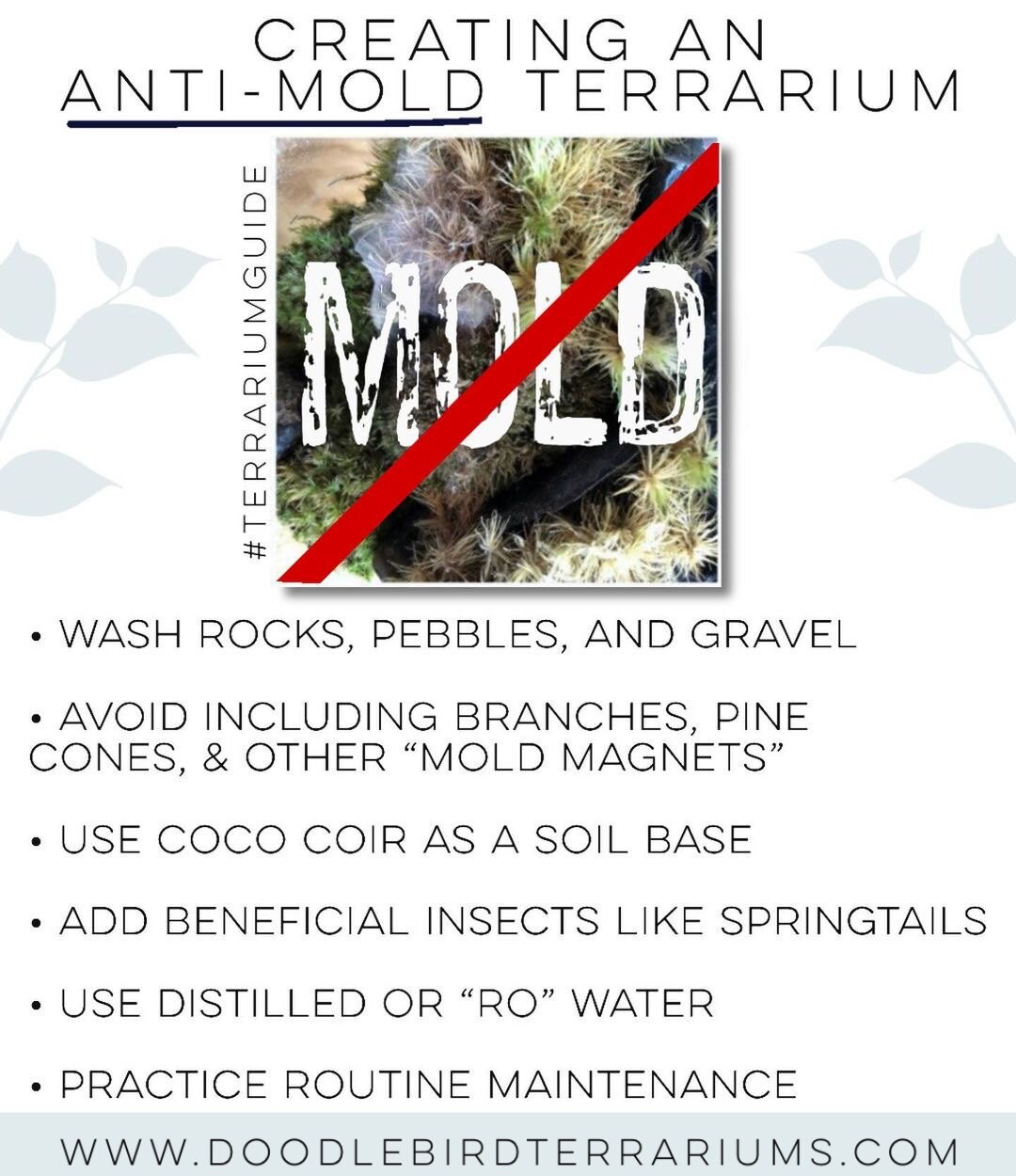I am often asked how to deal with and eliminate mold, mildew, and/or fungus that has taken hold of a planted terrarium. Truthfully mold is the number one reason most terrariums ultimately fail, followed closely by root rot which will be covered at a later time. In this article I will outline the 6 main ways I recommend combatting the dreaded terrarium MOLD issue.

The first thing you can do is start with a clean container, washing it (and any decor you will be adding) with warm soapy water. This will eliminate any microspopic pathogens being unwittingly added via these items.

Try to avoid the urge to add biodegradable decorations like sticks, pine cones, seed pods, etc. because within the humid environment of a sealed terrarium they will quickly begin to degrade or rot. Think about this: the word biodegradable literally means a substance or object is capable of being decomposed by bacteria or other living organisms (such as mold/fungus). To make matters worse a closed jar gets virtually no airflow which, as you may have guessed, is just how mold likes it. Even if you add beneficial insects to feed on mold and fungus (discussed below), they may be overwhelmed by just how fast it can grow and spread in the closed system.

Another way to reduce the risk of introducing mold into the terrarium is to use a substrate like coco coir, which is an eco friendly planting medium made from ground of coconut husks.

The most effective way to keep mold at bay is to create a bioactive terrarium. By adding beneficial organisms you create a mini ecosystem just like what is present in nature. Tropical or temperate Springtails are as hardworking as ants when it comes to cleaning up house. These tiny organisms are not only incredibly cute, but have a voracious appetite for mold in particular. They will not harm healthy plant tissue, they just don't have a taste for it, so they are complately safe to keep in planted terrariums. Get live springtails here.

I always recommend using distilled (or reverse osmosis) water for terrariums, and if that can't be found spring water or rainwater are the next best thing. There are a number of benefits to using distilled water as outlined in "tip #5" above, and reducing the conditions where mold thrives is one of them.

The final tip, and one of the most important, is to practice routine maintenance. If you see that something is off, a dead leaf, a bit of mold, dirty glass, dont just leave it. By keeping up on maintenance you will be reducing the likelyhood that a problem such as mold will get out of hand. I recommend checking on your terrarium at least once a week. It doesn't take more than a few seconds to look it over. If you don't see any problems there is no need to do anything and you're free to go about your day but at least you have the peace of mind knowing everything is as it should be.
The reason(s) you may be experiencing a mold problem may be different than the next person, so I've tried to cover all the bases of what could be potentially causing it.
I didn’t talk in detail about air flow or temperature, though these may also play a role. Some would say to allow for air flow in order to get rid of mold and while I agree it could help in some cases, it will not be the cause of the mold problem so opening the lid will only temporarily help. I have had hermetically sealed terrariums never show a spec of mold, while others with air vents that become covered in mold growth. So I strongly believe there are other issues at play such as the ones I listed above. The same goes for temperature, while I generally have observed LESS mold at cooler temperatures there have been exceptions to this rule. So further experiments are needed in order to say conclusively how air flow and temperature play a role in mold growth and just how important those elements are to combatting it.
I hope these tips help you to become more successful in creating self-sustaining terrariums without the headache of mold overgrowth!
Article based on the book A Family Guide to Terrariums by Patricia Buzo
© 2024 Doodle Bird Terrariums

